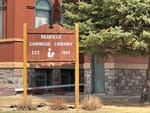A shortage of substitutes to fill in for full-time teachers is forcing school districts in South Dakota and across the country to take sometimes drastic measures to keep classrooms staffed, and concerns are rising that the quality of student education may diminish as a result.
Many full-time teachers are losing planning and training time to fill in for absent colleagues. Some classes are being combined, resulting in higher staff-to-student ratios. A few South Dakota schools have closed temporarily or shifted to virtual learning via computer because of teacher absences and limited substitutes to cover for them.
The number of available substitutes has been dropping steadily for several years in many school districts, as fewer people want to take on the challenge of teaching a group of students they don’t know in a subject in which they may not be well-versed.
The COVID-19 pandemic has turned the substitute shortage into a crisis in some districts.
As the pandemic lingers, and the highly contagious omicron variant of the coronavirus has become dominant in South Dakota, more full-time teachers are out sick with COVID-19 or staying home to care for ill or exposed children than normal, increasing the need for substitutes. Meanwhile, many former substitutes — especially those who are retirees and at greater risk of COVID-19 complications — do not want to take the risk of teaching indoors with dozens of children. Education experts also say working as a substitute teacher has become less attractive, as some American children have become more assertive and less respectful of teachers than in the past.
Furthermore, a general worker shortage has given potential substitutes far more options to work where and when they want, in some cases for higher pay and benefits.
To attract more substitutes, some school districts have increased pay or reduced educational requirements for applicants.
In Sioux Falls, the state’s largest school system, the district has dropped its requirement that substitutes have a college degree, now requiring only a high school diploma. In January 2022, the district increased daily pay for substitutes from $125 to $160 at most schools, from $140 to $175 at high-need schools and from $150 to $190 per day for long-term subs.
“When unemployment is low, getting substitute teachers is tricky,” said Becky Dorman, human resources director for Sioux Falls schools. “We’re always looking for more substitutes, but we’ve had to make changes on all fronts to staff our schools during the pandemic.”
The shortage of both full-time teachers and substitute teachers has raised concerns among education experts that the quality of teaching and depth of learning may be suffering across the U.S. public school system.
“A shortage of substitute teachers, both in quantity and quality, across the country has never been more severe,” wrote Geoffrey Smith, director of the Substitute Teacher Training Institute at Utah State University, in a recent article for the national School Superintendents Association website.
Substitutes play a critical role in maintaining educational consistency for children who are in their formative learning years, said Dennis Fischer, superintendent of the Hot Springs School District in southwestern South Dakota.
“When a teacher is out, we still need learning to take place because we only have 36 weeks of teaching per year,” Fischer said. “If we’re going to have a teacher out a day or a whole week or more, we expect the education to go on,” Fischer said.
When schools have limited options to fill teaching slots, administrators acknowledge they may sometimes be forced to bring in someone who serves mostly as a classroom attendant.
In most cases, however, school officials do their best to fill open classroom slots with qualified, experienced substitute teachers who keep learning on track.
Joel Bailey, superintendent of the Platte Geddes School District in southeastern South Dakota, said he once read an estimate that each public student will on average be taught by substitutes the cumulative equivalent of one year of their K-12 education.
“The effectiveness of subs in the classroom is extremely important,” Bailey said.
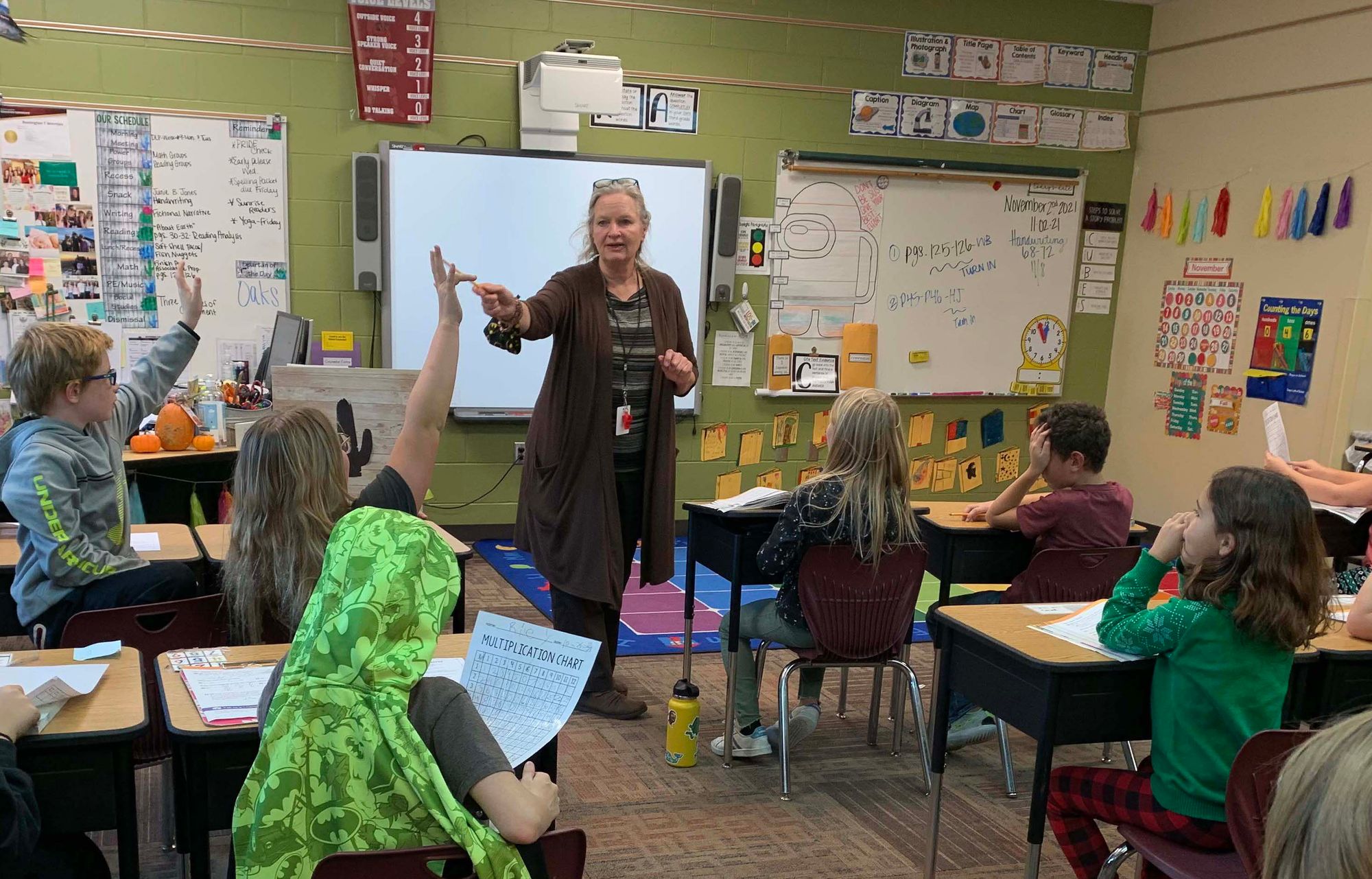
Classes combined or moved to virtual learning
At some point, if teacher absences rise and enough substitutes cannot be found, school districts must make the difficult decision to close schools and transition to virtual teaching via computers. Rapid City Area Schools shuttered three schools temporarily in January because of high staff absences due to coronavirus infections.
Also in mid-January, an outbreak of COVID-19 and subsequent high number of close contacts with infected people prompted the Hot Springs district to move to virtual learning for its secondary school that houses grades 6-12. Some teachers fell ill with COVID-19, some had to quarantine due to close contacts with infected people, while others had to stay home to care for children who were ill, said Superintendent Fischer.
“We could not get all the classrooms filled,” Fischer said. “We did have a shortage of staffing and a shortage of subs that caused us to go virtual.”
Full-time teachers in Hot Springs, as in many South Dakota school districts, have sacrificed planning periods to cover for absent colleagues.
In some cases, three classes of children in Hot Springs have been combined into two larger groups when teachers and substitutes were scarce, Fischer said.
On rare occasions, when instructor absences were particularly high, four or five classes of children have been sent to the school library, where they work on homework and are supervised more than being taught, Fischer said.
“We were supposed to be socially distancing, but we were packing people into the library, which was really a last resort,” he said.
Hot Springs uses a sliding pay scale depending on the qualifications of each substitute and now long the sub works, Fischer said.
Substitutes in Hot Springs must have a college degree and pass a background check, Fischer said. Base pay is $90 per day, but those who have a teaching certification are paid $100 per day, and can make even more if they become a long-term substitute who may cover for a teacher out for a week or several weeks, Fischer said.
“It’s a very difficult and challenging job, and It takes a certain type of persona and personality to just step in with these kids,” Fischer said. “Kids are kids and it’s always been that way. You see a substitute teacher and you think it’s a day off, so some of our kids will challenge the subs and they have to know how to handle that.”
In the article for the superintendents association, Smith notes that school districts across the U.S. are lowering job requirements, increasing pay and engaging in aggressive recruitment efforts to attract more potential substitutes. Smith argues that offering health and other benefits — which typically are not provided to substitutes — is one way to increase the pool of potential subs. He added that the easiest, least-expensive way to improve the teaching abilities of substitutes is to improve and expand training opportunities for them.
“No other small investment in education today will make a more significant improvement in the classroom than training substitute teachers,” Smith wrote.
As a result of challenges related to the pandemic, availability of substitute teachers has fallen across the country. According to reports by FutureEd, an education research institute at Georgetown University, U.S. schools were able to fill about 80% of all open classroom slots with substitutes on a regular basis. During the pandemic, that coverage rate has fallen to 50% to 60%, the institute said in a recent report.
The institute provides states and school districts with data and suggestions to improve the availability and quality of substitute teachers. One major challenge for school districts is to provide adequate training before subs enter the classroom, and relevant follow-up training after the school day ends. Research showed that only about 40% of U.S. school districts provide training to subs, and even fewer provide training in classroom management, which the institute sees as a key component of substitute success and effectiveness.
“Just 11 percent of school districts offer classroom-management training to subs, and most of the time, it’s a one-time orientation to the job,” the institute wrote in October 2021. “As a result, people go into the classroom unprepared. Not surprisingly, lots of people don’t stay. Even when people do stay, without basic training and support, the classroom experience isn’t great.”
FutureEd experts concluded that unless schools do more to improve substitute training, pay and job support, the substitute shortage will continue. “The labor market right now is really sending us such a clear signal that [the system] is not working,” the report said.
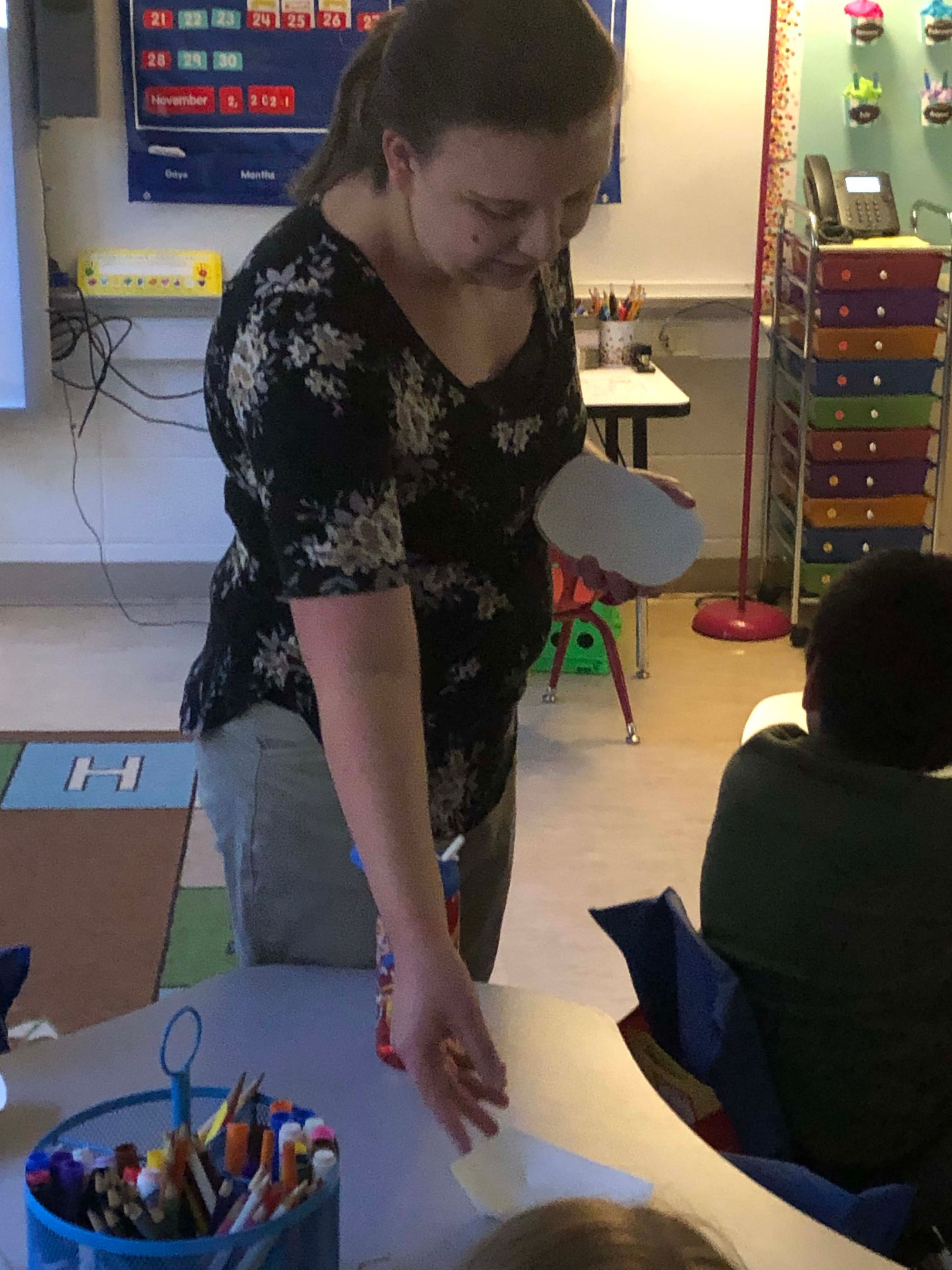
New incentives sought to lure subs
The South Dakota Department of Education does not keep track of teacher or staff absences and has no significant role in arranging substitute teachers, a task handled at the local school level, said Ruth Raveling, spokeswoman for the department.
“We know that South Dakota educators and school leaders are doing the best they can to keep students and staff safe, healthy, and in-person as much as possible,” Raveling wrote to News Watch in an email. “They remain committed to keeping school doors open, and we commend their efforts in the face of current challenges.”
Raveling said the department and office of Gov. Kristi Noem are working to improve overall teacher staffing in South Dakota by supporting a 6% increase in state aid to education, which Noem suggested should be used to raise teacher salaries and aid recruitment of new educators.
The Sioux Falls schools have begun to incentivize substitutes to teach more days by offering contests in which subs can win $100 retail gift cards and are entered more often if they work more days, Dorman said.
“It’s fun stuff like that to further push the that we need them, we appreciate them and we’re glad they’re here,” she said. “Those kinds of things seem to be helping.”
The district currently has a pool of more than 800 potential substitutes, but still has had difficulty covering classroom positions during the pandemic, Dorman said.
The district of about 24,000 students has about 1,900 teachers and 400 educational assistants, and it is not uncommon to have 285 teaching absences each day, Dorman said.
The pandemic has resulted in more teacher absences than usual, she said, especially so far in 2022 as the highly contagious omicron variant has become dominant, Dorman said.
“The past two and a half weeks have been challenging because we’re seeing highest absentee rates in January than anytime in the past five years,” she said.
But before the pandemic, the district has seen spikes in instructor absences occur when influenza has been active or teachers are taken away by major sporting events such as the state basketball tournament, Dorman said.
Substitutes are in greater need at a time when the number of new teachers entering the profession is also down, she said. The declining interest in teaching as a career has reduced a former pipeline of potential substitutes among college students seeking teaching degrees who wanted real-world experience during their studies, as well as among recent education graduates trying to secure a full-time position in the district, she said.
Substitutes in the Sioux Falls school district undergo four hours of in-person training before starting in the classroom and are offered an optional eight-hour online training course by the district.
The lack of available substitutes has cut into the time full-time teachers are able to undergo training that makes them better teachers, Dorman said.
“Prior to the pandemic, it was common for us to offer teachers a lot of professional development, and we could do that by having subs cover for them,” Dorman said. “That has not been an option during surges of the pandemic when we really need substitutes.”
The Platte Geddes district is facing a shortage of substitute teachers but has not suffered major classroom interruptions because COVID-19 outbreaks have been mild and did not cause a large number of teachers to be out at any one time, said Superintendent Bailey.
The district has a core group of potential substitutes that is largely made up of retired teachers who still enjoy the classroom experience or want to make some part-time money, Bailey said. At times, during breaks in the higher-education schedule, the district attracts college students who seek part-time work. Subs in Platte Geddes are required to have a high school diploma and pass a background check, and are paid $110 a day, Bailey said.
“We are certainly not unscathed by the sub shortage, but we are managing to get by,” he said.
Over time, as demand for their services has increased, substitute teachers have become more selective in when and for which school or age group they are willing to teach, Bailey said.
Platte Geddes and other districts also face difficulty in finding substitutes for higher-level or advanced courses, such as upper-level chemistry, biology or math, Bailey said.
The district has about 500 students in K-5 and 6-12 schools and two Hutterite colony schools and has roughly 45 teachers and assistants among its 70 total employees.
The district has seen some older substitutes exit the pool because they are concerned for their health amid the pandemic, Bailey said.
Meanwhile, Platte Geddes has sometimes had administrators take over teaching of classes when substitutes cannot be arranged to cover for instructor absences. Teachers have also surrendered their planning periods to fill in for absent colleagues. “You hate to take away a teacher’s prep time, but we compensate them for that,” Bailey said, adding that teachers who lose planning periods are paid a roughly $25 bonus.
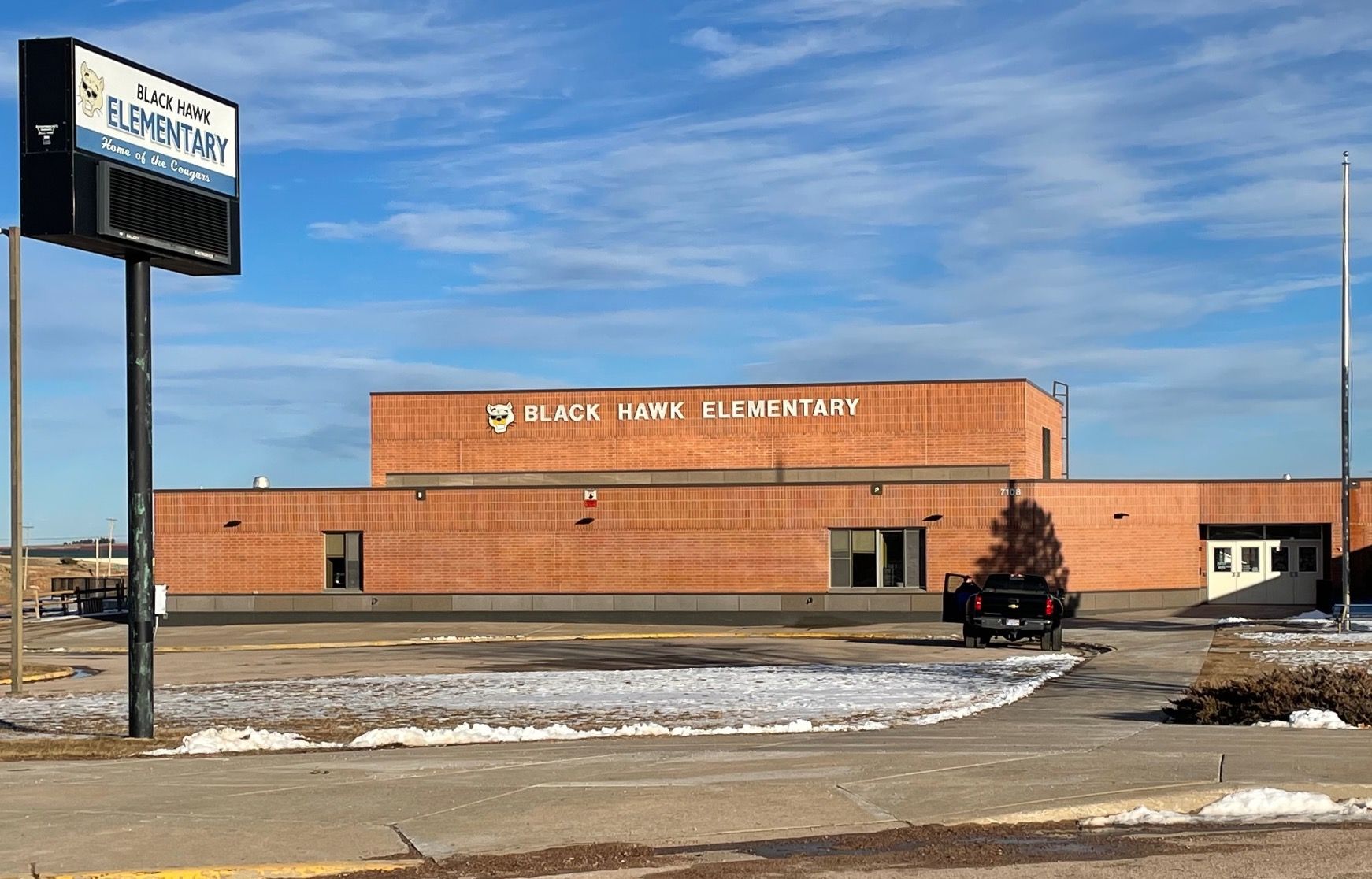
A flexible, fulfilling position for some
For some substitute teachers, the job provides a great way to earn extra money, have a highly flexible work schedule and work closely with children, according to Elizabeth “Liz” Campbell, an experienced substitute teacher.
Campbell has worked as a substitute teacher for several years, the last three in Hot Springs where she fills in mostly in the elementary school.
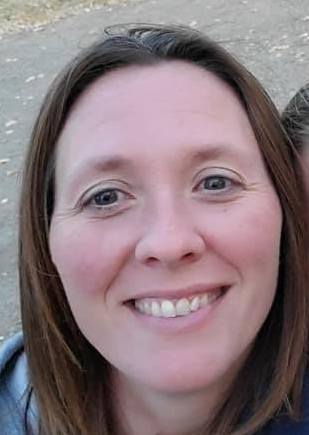
Subbing works out well for Campbell, 43, because she has prior teaching experience and her four school-age children attend the Hot Springs schools. She said she enjoys teaching young children and has received strong support and respect from teachers and administrators in the Hot Springs district.
In 2020, Campbell said she worked several days a week because many older substitutes dropped out of the workforce due to concerns over COVID-19. This year, some older subs have returned, so Campbell is working about two days a week.
Subbing for teachers who have a planned absence is easier because the teachers tend to leave behind lesson plans, as opposed to filling in for teachers who are unable to plan for unexpected absences, Campbell said. But technology, including so-called “smart boards,” allows absent teachers to quickly share classroom materials with subs via shared computer access.
Managing a classroom of students who are unknown to the substitute is challenging and may turn some people away from the job, Campbell said.
“Not all substitutes are educators, so some come in and they don’t know how to handle a classroom,” she said. ““I’ve taught before, so I know how to handle a classroom, and now in Hot Springs I know most of the kids.”
Campbell said she understands why some potential substitutes have turned away from the profession, especially in larger districts or more urban areas where children may be less respectful than in a small town like Hot Springs.
“There’s definitely a change you see in the respect from kids,” said Campbell, who has also worked as a sub at an inner-city school in Kansas City. “Those are really things that are taught in the home and part of the breakdown in families.”
The uncertain work schedule and lack of benefits may also turn some people away from subbing, she said.
School officials in South Dakota say they will continue to promote subbing as a rewarding, flexible way to earn extra money.
“It’s the most flexible job you could ever have,” said Dorman of the Sioux Falls schools. “Even if you had two afternoons free a month, we would love to have you.”

